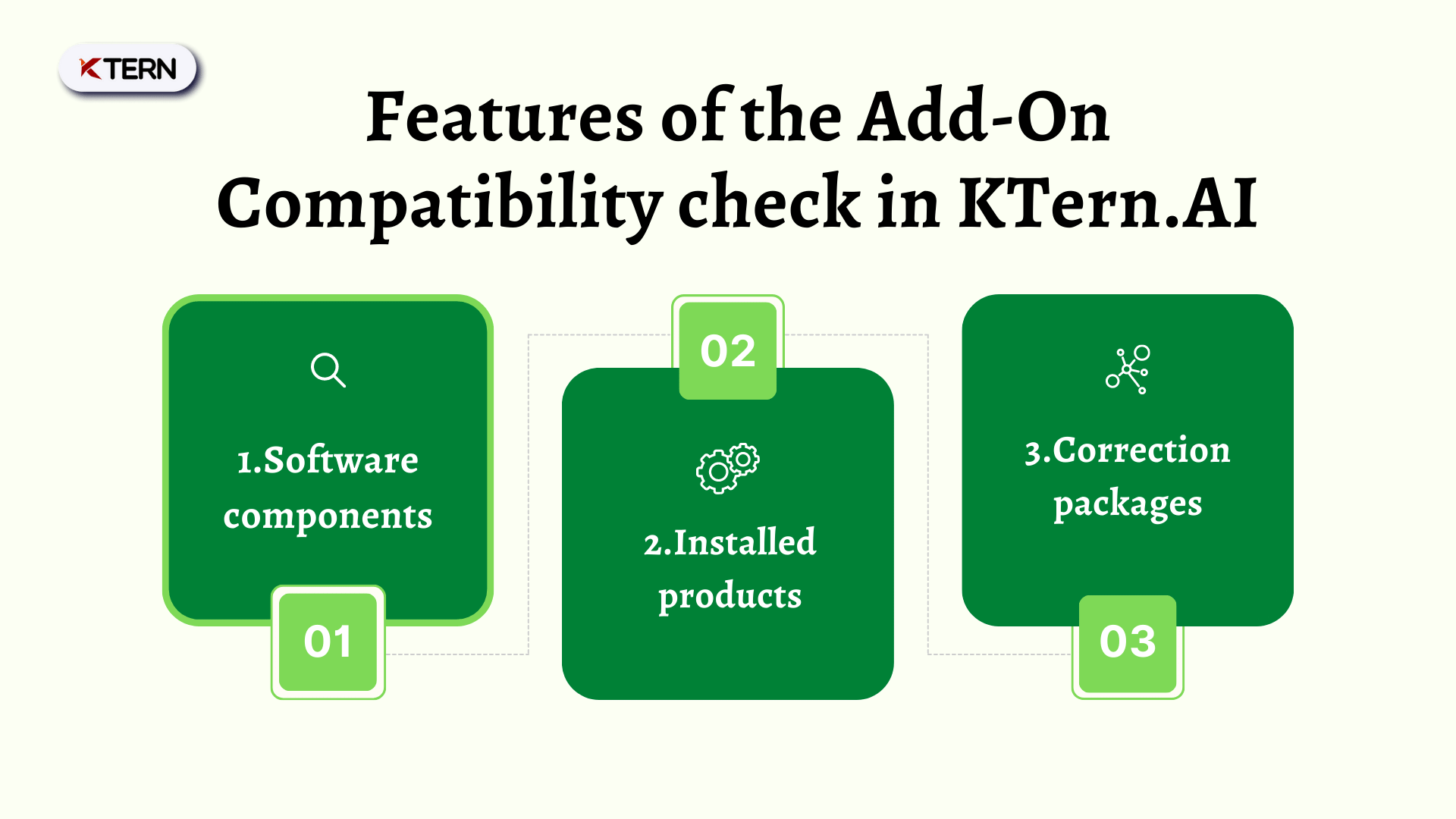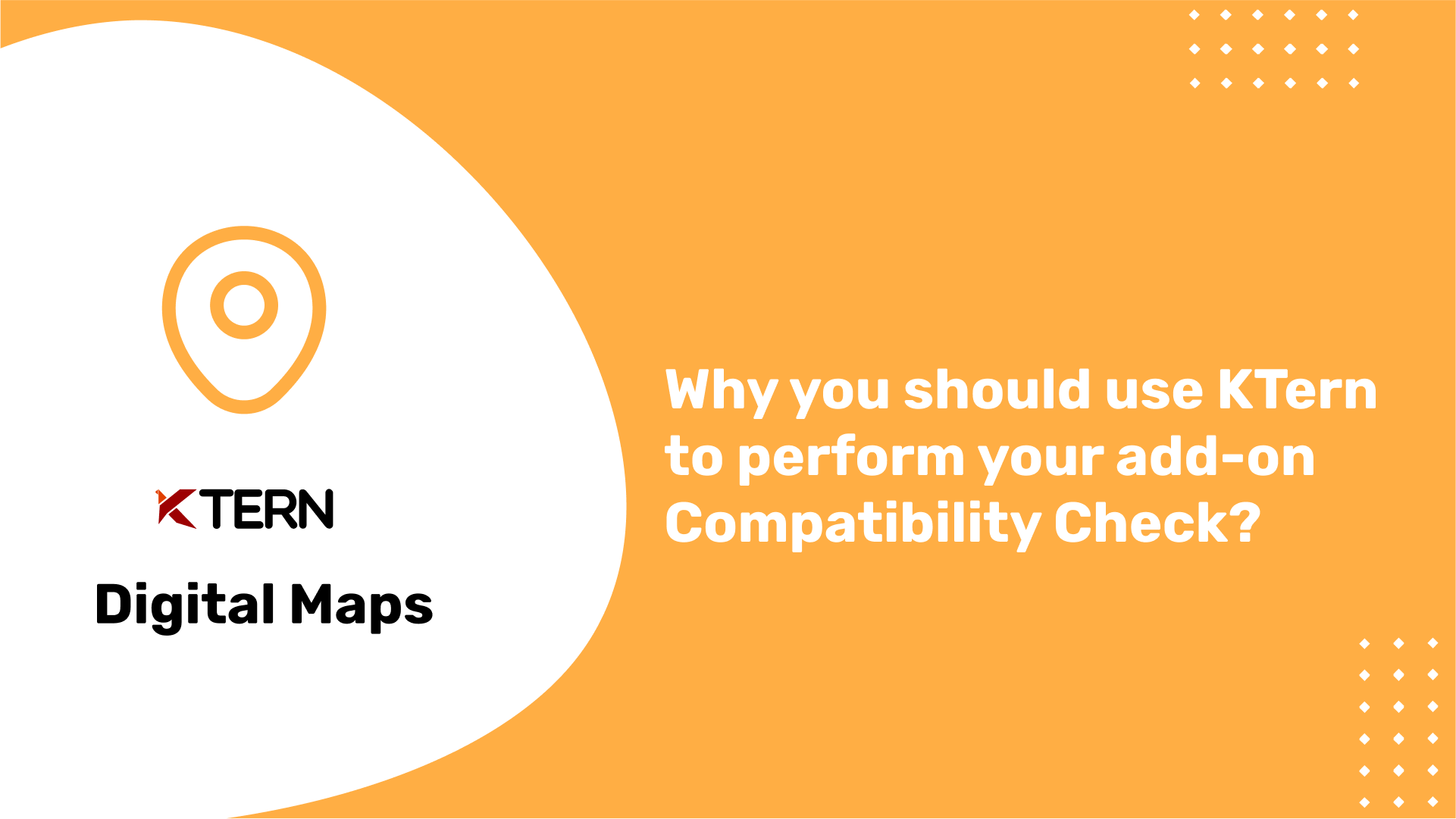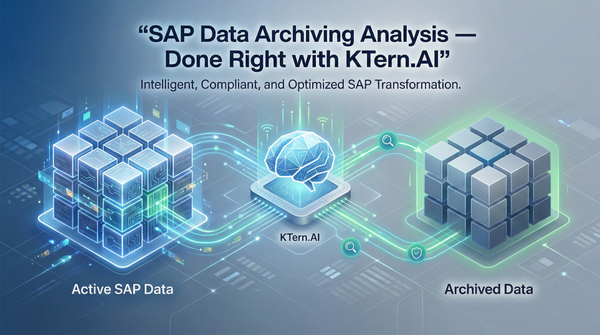Why should you perform Add-on Analysis for your S/4HANA Transformation?
Each module in SAP has several business processes and business functions. You can activate or deactivate the business functions as per your organization’s needs. However, if you need any additional functionality apart from the standard SAP processes, you will have to install an add-on. SAP offers a wide range of add-ons that you can use to enhance your standard SAP features. These add-ons can be standard SAP add-ons, SAP’s custom development add-ons or partner (third-party) add-ons. It is necessary to check the installed add-on’s compatibility in the version of S/4HANA that you are moving to. For every add-on, you must find out if it is compatible with the latest version of S/4HANA or if any additional package is required for the add-on.
In this article, we will explain how KTern automates the add-on compatibility check process and provides a detailed report before you make the move from SAP ECC to S/4HANA.
Table of Contents
- Introduction
- The process of add-on analysis
- KTern’s add-on compatibility check
- Features of the add-on compatibility check in KTern
- Software components
- Installed Products
- Correction Packages
- How is KTern’s add-on compatibility check different from its competitors?
- Next Steps
Introduction
Your transition from ECC to S/4HANA can stop in its tracks if there is an incompatible add-on. All add-ons must be certified for S/4HANA in order to run on S/4HANA. For SAP’s own add-ons or the ones sold through SAP’s pricelist, you can directly request the status of add-ons and additional packages from SAP themselves. However, SAP is not responsible for the independent third-party add-ons. In such cases, you have to check with the partner or software vendor regarding the status of the add-ons and the additional packages.
The process of add-on analysis
- First, you need to check the add-ons which are compatible and incompatible for the S/4HANA version you are targeting. The compatible add-ons can be migrated to S/4HANA without any trouble.
- For incompatible add-ons, you must notify SAP or third-party vendors. Advance notification will enhance the chances of your add-ons certification in time for your implementation/ deployment.
- You can contact third-party software vendors of incompatible add-ons and ask them to accelerate their certification process.
- You can uninstall the add-ons which are not in use.
KTern’s add-on compatibility check
KTern is an all-in-one product suite built for SAP Digital Transformations. With decades worth of SAP Tribal knowledge combined with automation, governance and collaboration capabilities, KTern is built to help the existing ECC customers migrate to S/4HANA before 2025. KTern covers the entire lifecycle and guides you before, during and after the conversion. Its inbuilt S/4HANAPEDIA rule engine combined with the 12 modules eases the transition from SAP ECC to SAP S/4HANA.
Before migrating to SAP S/4HANA, it is mandatory to assess the existing ECC landscape including your business process infrastructure, architecture, technical and user interface. This enables you to take a data-driven approach to S/4HANA. KTern’s Impact Analysis module assesses the complete SAP landscape and provides an assessment report. The assessment report enables you to understand the implications of the transition from an existing SAP ERP system to S/4HANA.
Add-on compatibility check is one of the most important and decisive features in KTern’s Impact Analysis module. It is part of the Discover phase in the SAP Activate methodology. KTern automates the process of add-on compatibility check. The main objective of this feature is to determine the add-ons incompatible with S/4HANA, and how it impacts the transition process.
Features of the Add-On Compatibility check in KTern
KTern automates the process of add-on compatibility check and does not require the installation of any SAP Notes in the system. After connecting the system, KTern runs the check and automatically classifies the installed add-ons into compatible and incompatible add-ons.

KTern also goes a step further and classifies the add-ons into three broad categories. They are:
- Software components
- Installed products
- Correction packages

Software components
A software component bundles a set of packages that can only be delivered to customers together. All packages are distributed disjunctively among software components. This means that the objects in a package can only be delivered to customers with a software component. You assign objects to a software component by assigning the package (containing these objects) to a software component.
E.g., SAP_BASIS, SAP_ABA, SAP_HR, SAP_APPL, HOME, LOCAL
After running the add-on compatibility check, KTern lists the software components along with the respective support packages and component types.
There are several types of software components, such as:
- Application platform components
- Industry Solutions – Layer 1
- Industry Solutions – Layer 2
- Application components
- Application extensions
The add-on compatibility can be illustrated with an example. Generic solutions and generic business processes cannot address industry-specific challenges. Hence, SAP releases industry solutions with industry-specific best practices, tools and processes. Now, your organization might have installed an Industry Solution specific to your line of business in SAP ECC. However, not all industry solutions are compatible with S/4HANA at the moment. During the Discover phase, KTern will check the compatibility of that industry solution and determine whether it is compatible with S/4HANA or not. If the industry solution is not compatible, then you must wait until SAP releases an S/4HANA compatible version of the industry solution and then migrate.
Installed Products
This section contains the collection of all versions of a product. A product is a unit that is visible to the customer and is installable and renewable. In an SAP environment, a product corresponds to an SAP technical component. After running the add-on compatibility check, KTern lists the installed products along with the release versions, vendor and product description.
Correction Packages
Generally, a patch represents the correction of a single error. A support package consists of a set of error corrections of the corresponding software component since the previous support package delivery. The confusion with support package contents is primarily with their make-up. KTern also lists the correction packages installed in an ECC system.In addition to the above classification, KTern also provides a detailed list of the incompatible add-ons, which can be used to review later and determine the path & timeline to S/4HANA.

Inferences from the add-on compatibility check
The add-on compatibility check is one of the most important pre-checks before the move to S/4HANA. You can safely migrate the compatible add-ons to S/4HANA. However, if one of your critical add-ons is not compatible with S/4HANA, then your entire business could be at risk. In such cases, you will have to wait for SAP’s roadmap to make that particular add-on compatible with S/4HANA. Only then, you can plan your transition from ECC to S/4HANA.
This add-on compatibility check is performed by the Basis consultants and the results are evaluated by the respective functional consultants. For example, in SAP ECC treasure management is part of the Finance (FI) module. But, in S/4HANA, it is a separate add-on and treasury management cannot function on its own. So, the finance consultants will evaluate this particular impact.
How is KTern’s add-on compatibility check different from its competitors?
Add-on compatibility check, being one of the most important steps in the Discover phase, is available in many other products in the market. SAP’s Readiness Check 2.0 and Panaya’s Release Dynamix offer the add-on compatibility check .
Detailed Analysis of add-ons
However, KTern provides a detailed analysis of the add-ons installed in the system and classifies them into the respective categories. It also provides additional information on the roadmap of the incompatible add-ons.
Stakeholder Collaboration
In addition, the stakeholders can create an issue against the incompatible add-ons and ask the respective functional consultants to evaluate their impact. Hence, KTern provides a collaboration platform as well for effective communication.
Handling Incompatible Third Party Add-On's
KTern also provides a link to the incompatible third-party add-on's website for any information regarding the compatibility roadmap of the add-on. Further, KTern’s S/4HANAPEDIA knowledge base can provide relevant information on how other similar customers handled the incompatible add-on.
Raise Incompatible Add-On Issue Request
In addition, KTern also provides the feature of raising the issue of an incompatible add-on to SAP itself. This feature is not available in any other contemporary product in the market.
Next Steps
Transforming your S/4HANA Upgrade Journey with KTern.AI
Now that you know how to automate the add-on compatibility check in KTern, you might want to get a first-hand feel of KTern and its other features which help automate and govern SAP projects from start to finish. You can get started with the same at Getting Started.
Alternatively, if you would like a guided demo of the product from one of our product engineers, kindly get in touch with us by submitting a message at Contact Us.




